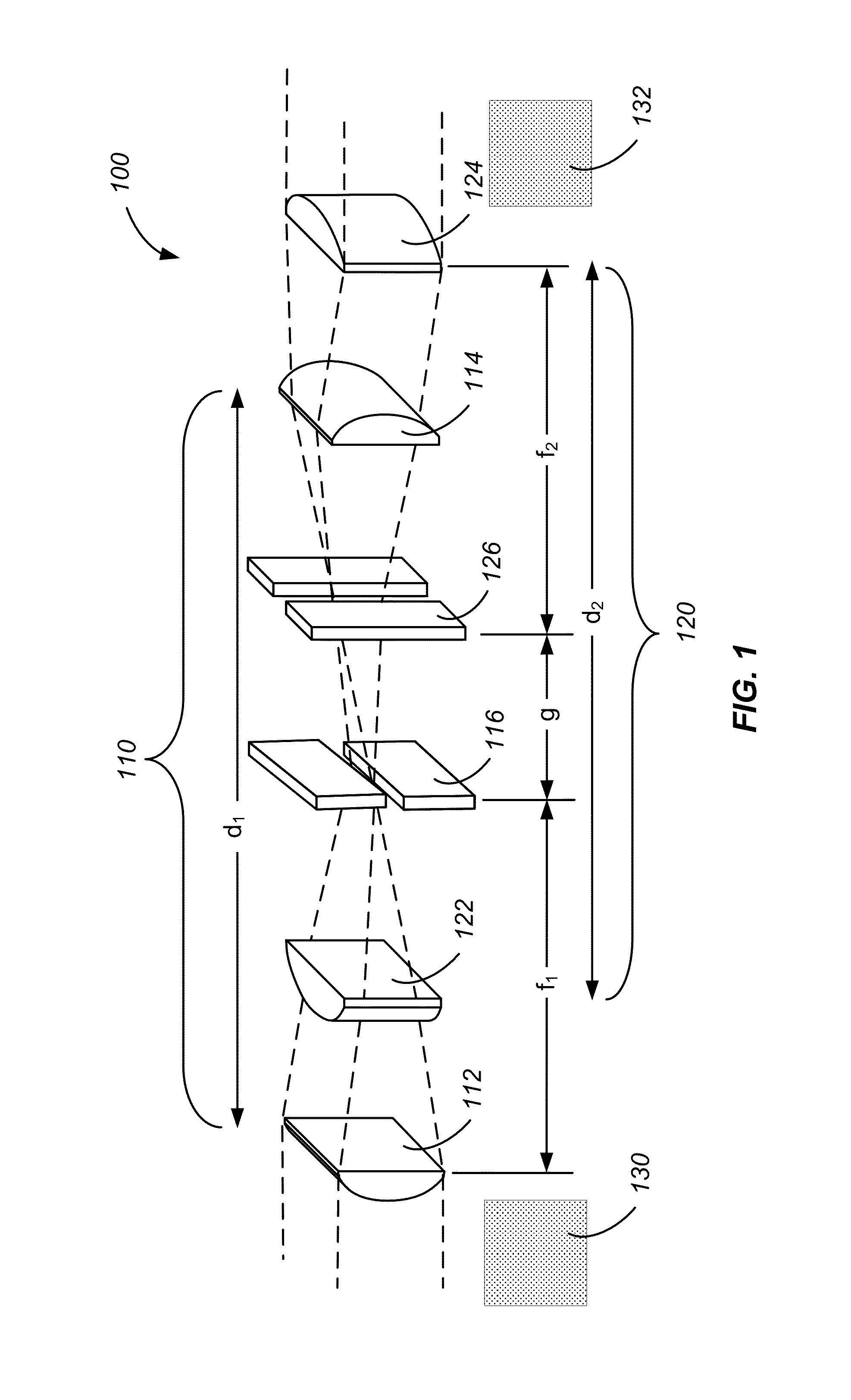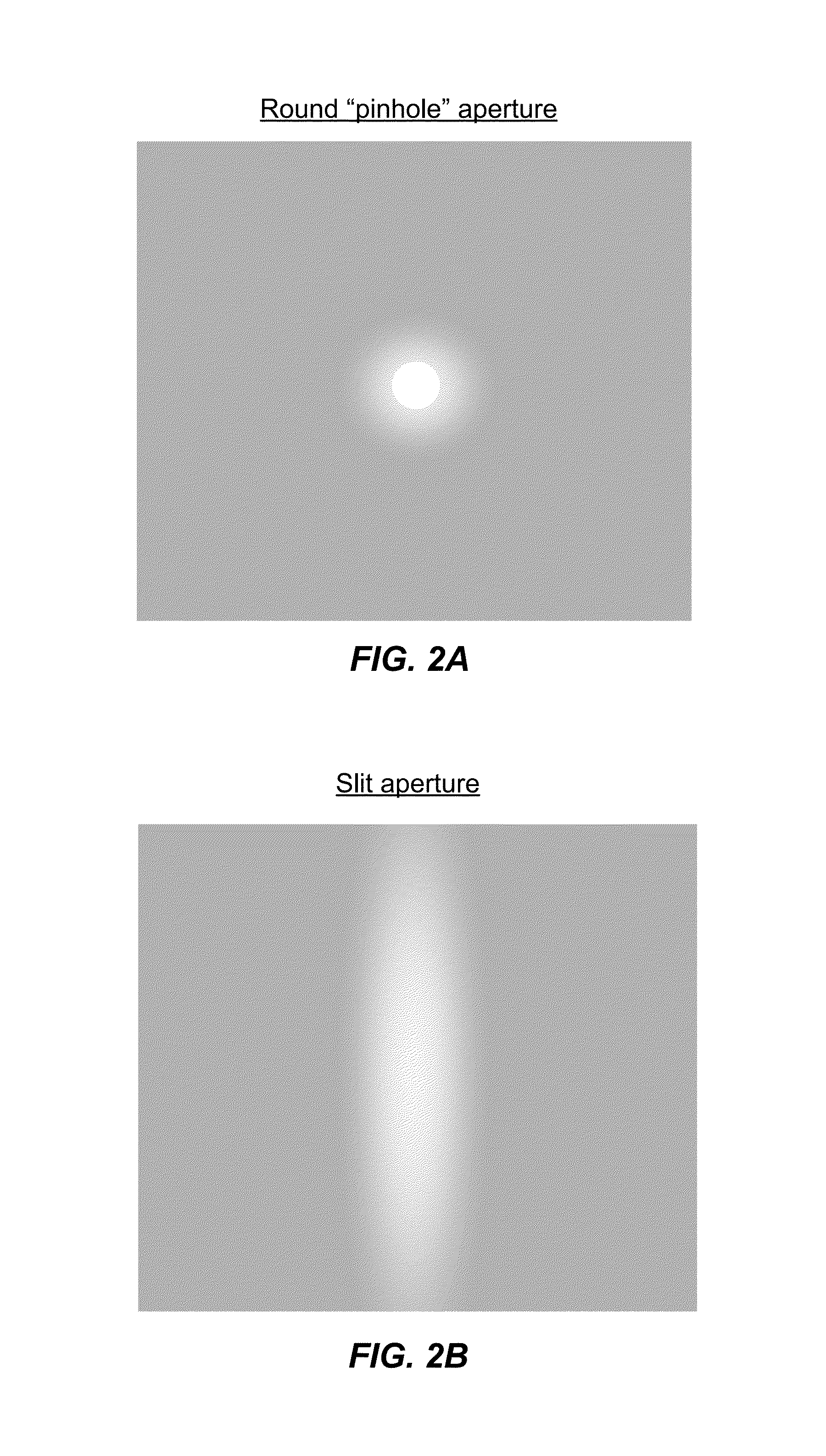Spatial filters for high power lasers
a laser and laser technology, applied in the field of spatial filters for high-power lasers, can solve the problems of reducing beam intensity, high-spatial-frequency variations in intensity and wavefront across the beam, and reducing the risk of optical damage to laser optics, so as to reduce the vacuum requirements of the laser system, reduce the cost and pumping time, and high repetition rate
- Summary
- Abstract
- Description
- Claims
- Application Information
AI Technical Summary
Benefits of technology
Problems solved by technology
Method used
Image
Examples
Embodiment Construction
[0022]As discussed above, pinhole spatial filters have been utilized in some high power laser applications. However, pinhole spatial filters present several problems in the context of high power laser systems. Because of the high intensities associated with some high power lasers, sputtering of the material surrounding the center of the pinhole can result during operation, producing sputtered materials that may contaminate optics. Contamination of lenses by sputtered material can result in increases in laser absorption by the lenses, eventually resulting in damage to the lens. Such contamination problems are particularly troublesome in pulsed applications, where frequent sputtering events can result in pinhole wearout, with the open area at the center of the pinhole expanding as a function of time. Over time, pinhole wearout results in decreases in beam quality and system performance.
[0023]Another problem presented by the use of pinhole spatial filters for high power lasers is pinho...
PUM
 Login to View More
Login to View More Abstract
Description
Claims
Application Information
 Login to View More
Login to View More - R&D
- Intellectual Property
- Life Sciences
- Materials
- Tech Scout
- Unparalleled Data Quality
- Higher Quality Content
- 60% Fewer Hallucinations
Browse by: Latest US Patents, China's latest patents, Technical Efficacy Thesaurus, Application Domain, Technology Topic, Popular Technical Reports.
© 2025 PatSnap. All rights reserved.Legal|Privacy policy|Modern Slavery Act Transparency Statement|Sitemap|About US| Contact US: help@patsnap.com



